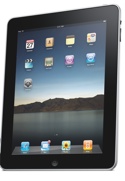On March 30, Seton Hill University in Greensburg, Pennsylvania announced that all students will receive a 13″ MacBook laptop and an iPad. Seton Hill is not the only university embracing the iPad: George Fox University in Newberg, Oregon will offer incoming freshmen a choice of a new MacBook or the iPad.
Last fall, Princeton University conducted a pilot program, giving Amazon Kindles to 50 students. Early feedback indicated that many “were dissatisfied and uncomfortable with the devices.”
Complaints centered around the inability of the device to function in many of the same ways that students interact with textbooks, including bookmarking pages, highlighting text, affixing sticky notes or other marks. Many of these same complaints would certainly apply to Apple’s iPad. So, why is Seton Hill giving iPads to incoming students?
According to the university, it is “training students of all learning styles and abilities to be better researchers, better at compiling and organizing data, and better at publishing and presenting information,” but, unlike Princeton, there is no indication that Seton Hill will use iPads as replacements for textbooks; rather, they will supplement and enhance existing class material.
In fact, there are currently only a very limited number of textbooks available in digital format due, in large part, to the challenges of converting non-text material (charts, graphs, mathematical formulas, etc.) into electronic format, according to the DisplaySearch research group (http://www.displaysearch.com). One company that is at the forefront of this challenge is ScrollMotion, which develops applications for interactive texts, and is developing iPad offerings.
ScrollMotion said the products would allow for notations, audio notes and an interactive glossary. Other companies engaged in converting textbooks to iPad-friendly formats include Inkling, CourseSmart, Textbooks.com and Etext.net.
Certainly iPads and other slates using TFT LCDs provide a more robust platform for developing the potential of electronic textbooks than devices with monochrome electrophoretic displays due to the ability to show full color, video, and other graphics. However, the question remains whether students will embrace the electronic format, as students (at least the good ones) read for long periods of time, and reading even the best TFT LCD for a long period of time will cause more eyestrain than reading printed text, says DisplaySearch.


